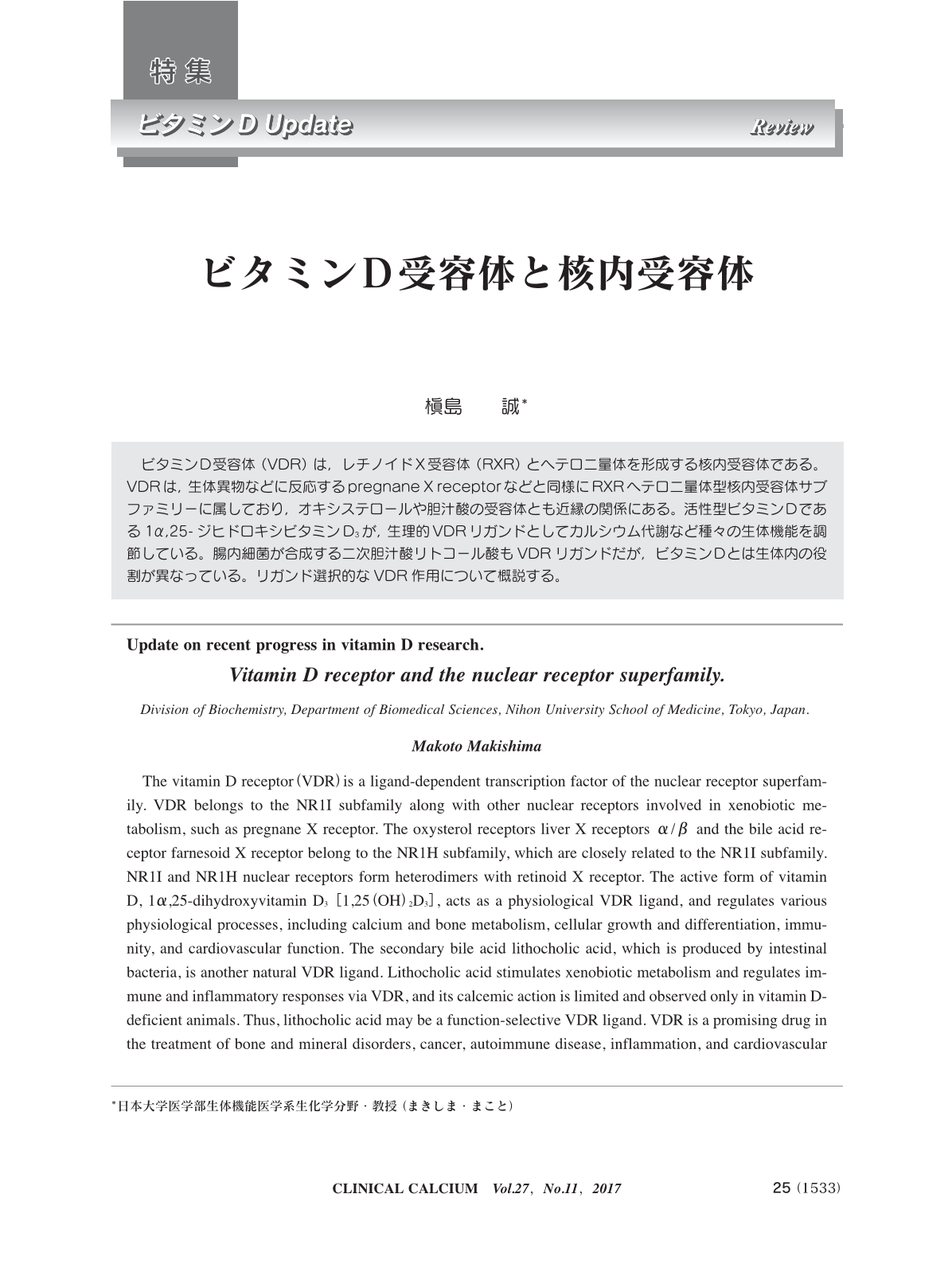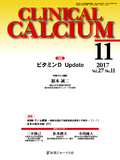Japanese
English
- 有料閲覧
- Abstract 文献概要
- 1ページ目 Look Inside
- 参考文献 Reference
ビタミンD受容体(VDR)は,レチノイドX受容体(RXR)とヘテロ二量体を形成する核内受容体である。VDRは,生体異物などに反応するpregnane X receptorなどと同様にRXRヘテロ二量体型核内受容体サブファミリーに属しており,オキシステロールや胆汁酸の受容体とも近縁の関係にある。活性型ビタミンDである1α,25-ジヒドロキシビタミンD3が,生理的VDRリガンドとしてカルシウム代謝など種々の生体機能を調節している。腸内細菌が合成する二次胆汁酸リトコール酸もVDRリガンドだが,ビタミンDとは生体内の役割が異なっている。リガンド選択的なVDR作用について概説する。
The vitamin D receptor(VDR)is a ligand-dependent transcription factor of the nuclear receptor superfamily. VDR belongs to the NR1I subfamily along with other nuclear receptors involved in xenobiotic metabolism, such as pregnane X receptor. The oxysterol receptors liver X receptors α/β and the bile acid receptor farnesoid X receptor belong to the NR1H subfamily, which are closely related to the NR1I subfamily. NR1I and NR1H nuclear receptors form heterodimers with retinoid X receptor. The active form of vitamin D, 1α,25-dihydroxyvitamin D3[1,25(OH)2D3], acts as a physiological VDR ligand, and regulates various physiological processes, including calcium and bone metabolism, cellular growth and differentiation, immunity, and cardiovascular function. The secondary bile acid lithocholic acid, which is produced by intestinal bacteria, is another natural VDR ligand. Lithocholic acid stimulates xenobiotic metabolism and regulates immune and inflammatory responses via VDR, and its calcemic action is limited and observed only in vitamin D-deficient animals. Thus, lithocholic acid may be a function-selective VDR ligand. VDR is a promising drug in the treatment of bone and mineral disorders, cancer, autoimmune disease, inflammation, and cardiovascular disease. However, the adverse effect hypercalcemia limits wider clinical application of 1,25(OH)2D3 and its derivatives. Elucidation of the mechanism of VDR function by lithocholic acid should expand the possibility of VDR-targeted approaches.



